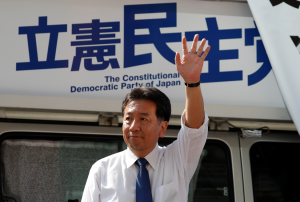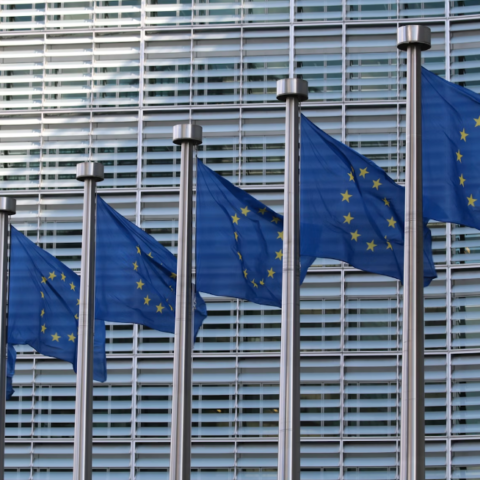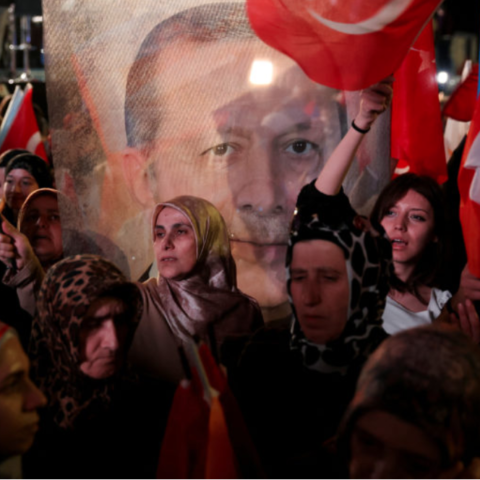In September, when Japanese Prime Minister Shinzo Abe called a snap election for the House of Representatives, the Japanese National Diet’s lower chamber, it took much of the press by surprise. Although Abe gained popularity for his tough response to the ongoing North Korea crisis and rapport with President Trump, he and his Liberal Democratic Party (LDP) had seen their approval ratings steadily declining in the face of a multitude of scandals which have plagued the party this year. In February, Abe and his wife were dogged by allegations that they were clandestinely offering financial support to a kindergarten in Tokyo where children were being taught a staunchly nationalist and revisionist curriculum perceived as racist towards Chinese and Koreans. During a Diet session in July, Abe was forced to respond to accusations that he helped his friend gain approval for a private veterinary school in an apparent act of cronyism. Not long after, Tomomi Inada, Abe’s Defense Minister who looked poised to become the next LDP leader, resigned after deliberately covering up the activities of Japan’s Self-Defense Forces (SDF) in South Sudan while they were on a peacekeeping mission.
Aside from the scandals, another reason why observers were initially skeptical of Abe remaining in power for much longer was due to his policies often being neither very successful nor popular. Abe and the LDP have stressed that it is their “duty” to revise Article 9 of the Japanese Constitution, which forbids Japan from maintaining a standing army, in order to allow Japan to have the military strength to deter potential foes. In reality, only around one-third of Japanese citizens believe the constitution should be altered, with even fewer believing it should be a government priority. In pursuing the revision of Article 9, Abe has risked angering China and other neighbors in what some believe is a ploy to get more votes from right-leaning voters. Meanwhile, after making lofty promises about improving the economy with his “Abenomics” when he became PM five years ago, the program, aside from recent growth, has largely failed to deliver. Today, Japan remains the world’s most indebted country while wages are low, the inflation rate falls, and the labor force shrinks. Abe has stated that dealing with Japan’s aging population, something which could potentially ruin the economy down the line, is one of his priorities. In spite of this, he and other politicians have been accused of neglecting to seriously address the issue by failing to increase the country’s fertility rate while simultaneously rejecting the idea of taking in more immigrants. Even Abe’s decision to call the snap election was unpopular as well, with nearly two-thirds of voters disapproving of the PM’s move.
However, despite everything Abe and the LDP have had to answer for while in power, the LDP and its coalition partner Komeito managed to win 313 out of 465 seats in the House of Representatives, losing only 5 seats from their pre-election total of 318. This gives the coalition a two-thirds majority in the chamber necessary for passing things such as constitutional amendments. As expected, there were a multitude of claims about causes for the LDP coalition’s resounding victory. Some believe that Abe used the North Korean crisis to his advantage and, by using such pointed rhetoric against North Korea, convinced others that only his party could effectively counter regional threats. Others propose that Japan’s aging population is a bulwark against administration change since these voters believe that changes in administration (i.e, voting out Abe and the LDP) will destabilize the system and only create uncertainty for the country. Thus, they turn out to vote for the LDP in large numbers. On an institutional level, some point to the introduction of single member districts to the Japanese electoral system in the 1990s as something which has only shored up the LDP’s power. Thanks in part to single member districts, the LDP is able to win with large majorities despite often only winning 15-25 percent of votes nationwide (Japan’s lower house uses a mixed electoral system where 289 House members are elected in single member districts while 176 are elected via proportional representation).
Even with his troubles, there was one problem Abe never appeared to face: a strong opposition or alternative to the LDP for voters. Originally, Abe’s greatest challenge appeared to be Tokyo governor Yuriko Koike, who had led her local political party Tomin First to a “historic” victory over the LDP in the 2017 Tokyo regional assembly elections. After such pleasing results, when it became more likely that Abe was to call an election, Koike decided to venture into national politics by creating the Party of Hope to challenge the LDP as a “tolerant and reform-minded conservative party” which could effectively replace the Abe government. While hopes and initial polls for the Party of Hope were high, the numbers soon dwindled and the party was effectively out of the running for forming a government after Koike announced that, despite being the leader of the party, she would not run for a seat in the Diet and intended to remain governor of Tokyo to oversee the 2020 Olympics. The Party of Hope did manage to become the second largest opposition party in the House of Representatives after the election, winning 50 seats, and formed an alliance with the like-minded Nippon Ishin no Kai party, which won 11 seats. But, after Koike announced her resignation as party leader in mid-November, the party is already at a crossroads and has a lot to prove to stay relevant prior to the next election.

Koike and the Party of Hope appeared to be willing to stand up to Abe and challenge his government’s unpopular policies, even putting out a plan called the “Twelve Zeroes” which aimed for things like zero nuclear power, zero food waste, zero campaign contributions from companies, etc. However, while they may have disagreements with the LDP, the party is ultimately not a progressive alternative to Abe and was only claiming to be a more “tolerant” center-right party. In fact, Koike served as Defense Minister under Abe during his first term as PM in 2007 and, due to her hawkish views on foreign policy, was dubbed “Japan’s Condoleezza Rice.” She has received criticism for her denials of atrocities carried out by Japan against Koreans, served as an executive of the far-right and historical revisionist association Nippon Kaigi, and was dubbed a “hardheaded nationalist” by Newsweek in their story covering her launch of the Party of Hope. To top it off, she supports revising Article 9 of the Constitution, in contrast to most opposition lawmakers, and visits the controversial Yasukuni Shrine, where 14 Class A war criminals are enshrined, yearly. Due to her similarities to and previous work with Abe, it was even suggested that she purposefully declined to challenge Abe via running in the election just so that she could strike a deal with him in the Diet since the Party of Hope was projected to win a fair number of seats in the House.
So, with the most visible opposition party being founded by someone who is in many ways an ideological ally of Abe, where does that leave the center-left and left-wing opposition? Prior to the launch of Koike’s party, the main opposition party was the Democratic Party (DP), a center/center-left party which had been the only party besides the LDP in Japan’s postwar history to form a government (which it did in 1993 and again from 2009 to 2012). In the 2014 election, the DP, in a previous incarnation prior to its merger with the Japan Innovation Party in March 2016, had managed to win 73 seats and was the most formidable left-of-center opponent to Abe. Following this, the DP saw a steady drop in popularity and struggled to recover. Its decline has been attributed to a number of factors, including what some experts deem a “lack of clear identity” for the party since it seems intent on poking holes in LDP policies without actually offering principled alternatives. Many voters were also weary of allowing the party to form a government again since the last DP administration was marred by instability and uncertainty, with 3 different PMs holding office in their 3 years in power. Rather than attempting to revise their proposed policies or present genuine alternatives to Abe’s, the DP responded to rock-bottom public approval by simply changing its name after the merger and electing former TV presenter and model Renho as its leader. These changes were just cosmetic and the party remained in shambles, losing 13 seats in the 2016 House of Councillors (Japan’s upper Diet chamber) election as well as another 13 in the 2017 Tokyo regional assembly election (the same election in which Koike bested the LDP), which resulted in the resignation of Renho. The DP’s fate was sealed when it announced that it would not contest the 2017 election called by Abe, thus de facto disbanding the party and leaving its members to run as independents or join other parties.

When the DP bowed out of the election, its members largely went in three directions. Many of members flocked to the Party of Hope (with former DP head Seiji Maehara backing it in a bid to unseat Abe), the more left-leaning members, led by former DP deputy leader Yukio Edano, started the Constitutional Democratic Party (CDP), and others decided to just stand as independents. Although it was originally just portrayed as a party of rejects who Koike wouldn’t allow to join the Party of Hope, the CDP, with its name referencing the fact that it opposes altering Japan’s constitution, emerged as the center-left alternative that the DP used to be. It managed to win 55 seats, the most of any opposition party, and appears to have disproven initial speculation that there would be no strong left-leaning option other than the Japanese Communist Party (JCP), which had 21 seats prior to the election but dropped to 12 following the election. Despite the emergence of the CDP, the fact remains that left-leaning parties (including the CDP, JCP, Liberal Party, and Social Democratic Party) only won a total of 71 seats in the House. Although they differ ideologically on a few issues, what unites them is their opposition to militarism and support for Article 9, policy stances which generally define one as a “liberal” in Japan since right-wing parties are more social-democratic than conservative parties elsewhere. But, as Abe begins his third term and much of the opposition seems poised to support him, the crippled Japanese left can only watch and hope for the best.


